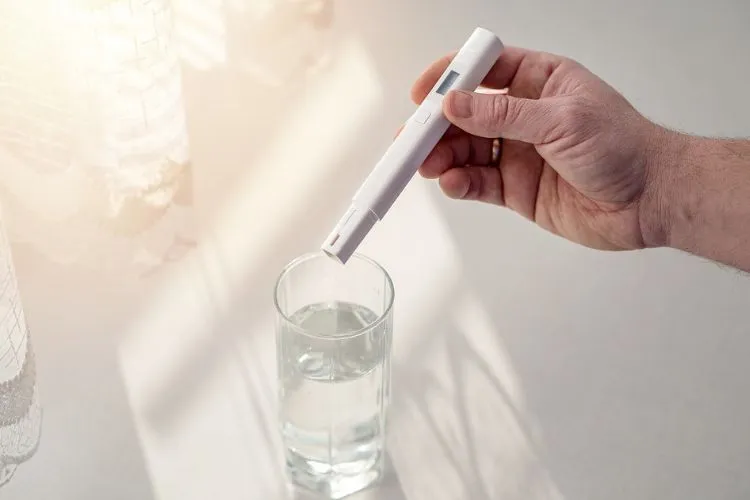Access to clean, safe drinking water is a basic human right, pivotal for well-being and public health.
Despite substantial advancements in water treatment technologies, the battle against harmful water contaminants continues.
But, do you know what contaminants does water filtration remove?
Well, the solution often resides in households and businesses tirelessly ensuring their water is free from detrimental impurities.
This article delves deep into the realm of water filtration, offering insights on the types of contaminants these systems can remove and their significance in delivering clean water.

💦 What Contaminants Does Water Filtration Remove?
Doubling down on the specifics, each type of filtration system excels at removing certain contaminants. Activated carbon filters are astonishingly effective at reducing chlorine, volatile organic compounds (VOCs), and pesticides.
Their prowess isn’t limited to removing harmful substances, as they also tackle taste and odor issues often associated with tap water.
Reverse osmosis (RO) filters do an impressive job of sweeping a multitude of contaminants, including fluoride, lead, arsenic, and even certain bacteria and viruses. These versatile systems are often the first line of defense against heavy metals and chemicals in residential and commercial settings.
UV purification systems specialize in disinfection. They are potent tools against a plethora of waterborne diseases by breaking down the DNA of pathogens, essentially preventing them from reproducing.
Comparing these systems reveals no single solution can eliminate all contaminants. Many discerning households choose a combination of systems to ensure comprehensive water purification, often combining activated carbon with RO or UV purification.
💦 Understanding Water Contaminants: From the Visible to the Invisible
The word “contaminant” may conjure images of cloudy, foul-smelling water. In reality, some of the most dangerous water contaminants are invisible to the naked eye. These fall into four primary categories: pathogens, chemicals, heavy metals, and sediments.
Pathogens encompass microorganisms like bacteria, viruses, protozoa, and parasites. Some are innocuous, but many can cause debilitating diseases or ebbing discomfort.

Chemical contaminants arise from a variety of sources, from agricultural runoff to household waste, to industrial discharge. Pesticides, pharmaceuticals, and even the chlorine used in water treatment can act as chemical contaminants.
Heavy metals, such as lead, arsenic, and mercury, are notorious for their chronic health effects when ingested. Lastly, sediment includes tiny particles like sand, rust, or silt.
The health ramifications of drinking unfiltered, contaminant-rich water range from mild to severe, encompassing everything from gastrointestinal illnesses and dermatological conditions to neurological disorders and potentially deadly diseases.
💦 The Fundamentals of Water Filtration Systems
Humanity’s answer to this threat often lies in water filtration systems, which differ considerably in their design, technology, and effectiveness.
Activated carbon filters are popular for their affordability and effectiveness in removing organic compounds and chlorine. Fans of crisp-tasting water without the chlorine smell often stand by them.
Reverse osmosis systems offer a more rigorous approach. They utilize a semi-permeable membrane capable of capturing a broader spectrum of contaminants, providing excellent protection against heavy metal and chemical contamination.
For those predominantly concerned with waterborne illnesses, UV purification systems may offer a sigh of relief. They use ultraviolet light to kill pathogens, ensuring bacteria-, virus-, and parasite-free water flows from the tap.
💦 Unlocking the Potential of Your Water Filtration Efforts
Even the most advanced water filtration system requires regular upkeep and monitoring to deliver optimal performance. Maintenance recommendations vary for each system type, but often revolve around timely replacement of filters or certain parts.
Manufacturers typically provide comprehensive guidance on the lifespan of activated carbon filter cartridges. Adhering to these timelines prevents bacteria from colonizing the filter or overstaying their welcome into the water supply.

Reverse osmosis systems do well with regular membrane cleaning and pre-filter replacements to prevent clogging and performance degradation.
For UV purification systems, bulb replacements and quartz sleeve cleaning are two pivotal parts of the maintenance routine.
Another crucial aspect of maintenance often overlooked is regular water testing. This not only keeps you updated on any new contaminants that might have sneaked into the water supply, but also assesses the performance of your filtration system.
Regular water quality tests can guide when to replace filters or parts, ensuring water remains safe for consumption at all times.
💦
💦 Frequently Asked Questions (FAQs)
What’s the best water filtration system to remove fluoride?
Reverse osmosis systems are tops when it comes to removing fluoride from water. These systems are typically capable of reducing fluoride levels by as much as 90-95%.
How effective are pitcher filters at removing lead from water?
The efficacy of pitcher filters against lead contamination varies by model and brand. Some models are specifically designed for lead removal, while others may not be as effective. Always vet the manufacturer’s claims and independent testing results when choosing a pitcher filter to deal with lead contamination.
Do I need a water filter if my water supply is already treated?
In an ideal world, treated water should be free from contaminants. Unfortunately, this is often not the case. Contaminants can still find their way into your water supply through leaching from old pipes or due to local runoff. A home water filtration system acts as an additional line of defense, ensuring that the water you drink is as pure as possible.
💦 The Role of Certifications and Standards in Water Filtration
When investing in water filtration systems, it is crucial to consider certifications and industry standards that can provide reassurance regarding the efficiency and safety of these devices.
Certifications from organizations such as NSF International, the Water Quality Association (WQA), or the American National Standards Institute (ANSI) indicate that a filtration product has been rigorously tested to meet specific performance criteria.
For example, an NSF/ANSI 53 certification implies that a filter can reduce health-related contaminants like lead, cryptosporidium, or volatile organic compounds (VOCs) up to the permissible levels established by the U.S.
Environmental Protection Agency (EPA). Similarly, NSF/ANSI 42 certification addresses aesthetic aspects, such as improving taste and reducing chlorine and particulate matter.
Ensuring that your chosen water filtration system meets these certifications can not only contribute to peace of mind but also verify that the technology is up-to-date and effective against the latest known contaminants.
💦 The Environmental Impact of Water Filtration
While the primary focus of water filtration is on producing safe drinking water, it’s also important to acknowledge the environmental impact of these systems. The process of water filtration, if managed improperly, can lead to increased waste through the disposal of used filters and cartridges.
However, many manufacturers are now addressing this issue by creating recyclable or biodegradable components, thereby reducing the carbon footprint of their products.
The proper disposal of water filtration waste is just as important as the filtration process itself. Encouraging responsible waste management and offering recycling programs are ways that companies are striving to be environmentally conscious.
Additionally, water filtration systems can decrease the reliance on bottled water, a major contributor to plastic waste and pollution.
By providing an in-home solution that’s both cost-effective and environmentally friendly compared to bottled water, consumers are empowered to make eco-friendlier choices.
💦 Innovations and Advancements in Water Filtration Technology
The water filtration industry continues to evolve, with new technologies and advancements that offer improved performance and convenience.
For instance, smart filtration systems equipped with sensors can now monitor water quality in real-time and alert homeowners when filter changes are necessary, ensuring that the filtration system is always functioning optimally.
Future innovations could include more efficient and affordable filtration mediums, systems that can be fully integrated into smart home setups, and even more compact and portable filtration solutions for people in transit or living in areas with limited access to clean water.
As technology advances, we may also see a broader adoption of green filtration technologies, systems that not only purify water but do so with minimal energy consumption and environmental impact.
By comprehensively exploring the spectrum of water filtration – the significance of certifications, environmental considerations, and technological advancements – consumers are better equipped to make informed decisions regarding their household water quality.
Embracing these aspects ensures a responsible approach to personal health and environmental stewardship without compromising on the safety and purity of drinking water.
Conclusion
The paramount importance of water filtration systems in modern society is the veritable truth that underscores the fairness of access to safe, clean drinking water.
These filtration systems, each characterized by unique capabilities and strengths, play an integral role in removing a myriad of harmful substances from water sources.
It’s through this understanding of the types and functions of contaminants present in water and the different filtration methods that households can make informed decisions on the best path to protect their personal health and that of their loved ones.
By adhering to a regular maintenance schedule and quality checks, the longevity and effectiveness of these systems remain intact.
Adequate water filtration systems in households and businesses breathe life into the grail of public health — the universal right to clean, safe drinking water.
By making the right choice and investing in maintenance, everyone can take a step towards contributing to overall health, well-being, and a secure future.

Devon Shorts, a seasoned expert with over a decade of experience in water safety, shares valuable insights on this blog “Aqua Safety Plus”. Trust his expertise to keep your water clean and your family safe.
